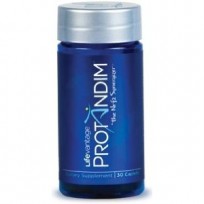With entire stores devoted to selling multi-vitamins and supplements, the headlines coming out about multi-vitamins seem to be conflicted. One day, the media can report that they are essential to preventing disease and the next day reports state these vitamins are doing more harm than good.
For example, a large observational study by the Iowa Women’s Health Study followed a group of women for 19 years and found that those women who reported taking a daily multi-vitamin were actually 6% more likely to diet than those who did not report taking a daily multi-vitamin. Researchers have hypothesized that users of multi-vitamins may be healthier because they tend to have a healthier lifestyle and diets, which lower their risk of disease and called for a randomized study to look at the cause and effect relationship of the Iowa study.
The randomized study, called the Physicians’ Health Study II, followed 14,000 men who took either Centrum Silver or a placebo everyday for 11 years and found that the risk of dying was not significant between the two groups. The study also found that taking a multi-vitamin had no effect on the risk of developing heart disease, stroke or cancer. This find has been consistently proved in other studies as well, including the Multiethnic Cohort Study and Women’s Health Iniative cohort.
So when is it worth it to take a multi-vitamin? The answer, in short, is when it will suppliement nutrients that you may not be getting from your regular diet. For example, between 7-16% of women aged 12-49 are iron deficient and may benefit from multis that contain the recommended daily value of 18 miligrams. Additionally, persons age 50+ generally get vitamin B-12 from either fortified foods or supplements, with the recommended daily amount being 2.4 micrograms.
The important takeaway from the multi-vitamin argument is to not rely on them to keep you healthy! While multi-vitamins may be beneficial for those who have a nutrient deficiency, it is important to keep in mind that research shows that these multi-vitamins will not reduce the risk of disease and that they are not a subtsitute for a healthly lifestyle.
























 Watch this Video on A Better Way To Fight Harmful Free Radicals
Watch this Video on A Better Way To Fight Harmful Free Radicals

The NIH and CDC both have stated that 80% of American adults have at least one nutritional deficiency during clinical testing. According to the NIH, 50% of adults tested clinically have shown an overt (acute) deficiency of Vitamin D and even higher percentage had a deficiency of magnesium. The largest study on vitamin E in medical history (Am J Clin Nutr 2006 Nov;84(5):1200-7) stated 93% of American men and 96% of American women do not obtain the recommended dietary allowance of 15 IU of vitamin E per day
If the time to take a multi-vitamin is when you have a nutritional deficiency, that means the vast majority of adults in the US should be taking a multi-vitamin.
The Physicians Health Study II was only of male physicians that had no nutritional deficiencies at the beginning of the study. It was conducted via questionnaire and no medical testing was done. The participants were not allowed to take any supplement containing more than the RDA for any vitamin or mineral. (harvard.edu)
The NIH data also demonstrates that the Physicians Health Study II was far from representative of the general public.
The supplements used in the Physicians Health Study II were:
Vitamin C (500 mg synthetic ascorbic acid) which is not a readily bio-available form for humans,
Vitamin E (400 IU of synthetic dl alpha-tocopherol) It is only 1/2 as effective in your body as d alpha-tocopherol (natural form). It also did not include the vital gamma-tocopherol.
Beta-carotene (50 mg Lurotin – a synthetic form).
A multivitamin (Centrum Silver)
The multi-vitamin they allowed in the Physician’s study, Centrum Silver, is one of the lowest rated vitamins available. Its absorption and bio-availability rates are practically nil.
If you use a good multi-vitamin from companies like Douglas Laboratories, Source Naturals, Truestar Health or USANA instead of Centrum Silver I would be willing to bet the results would be significantly different.
In the Iowa Women’s Health Study: Epidemiology of Cancer in a Cohort of Older Women, (http://epi.grants.cancer.gov/) there was no medical testing done. It was simply 6 mailed questionnaires to 41,837 Iowa postmenopausal women, ages 55 to 69 years over 19 years. How anyone could draw any meaningful conclusion on the efficacy of vitamins from that study is a mystery.
The RDA is for B-12 is 2.4 micrograms.(NIH.GOV) That is the minimum amount needed to prevent Biermer’s disease (pernicious anemia). That is FAR from the amount needed for optimal health and will not prevent the chronic problems related with B-12 deficiency.
The inadequacy of the RDA is an entirely separate discussion, but a good example of the difference between the RDA and optimal levels for health is vitamin D. The RDA is 600 IU/day and the upper “safe limit” is 4000 IU/day. What makes that scientifically indefensible is the fact that 10-20 minutes of full body exposure to sunlight creates blood levels equal to 10,000+ IU/day taken orally. If there were not an established biological need for those levels of vitamin D, your body simply would not produce them. With that in mind, the RDA may be ten times too low for what adults that work indoors or live outside the tropics need for optimal health.
For me the important takeaway is not to base your opinion on the efficacy of vitamins or minerals on questionnaires or the utilization of non bioavailable nutrients.